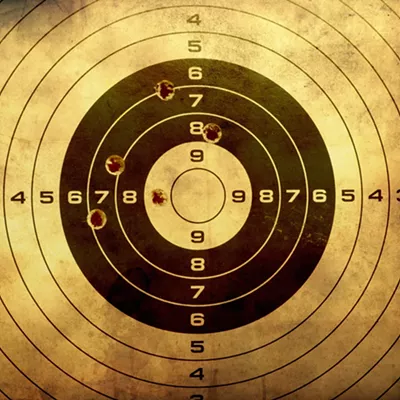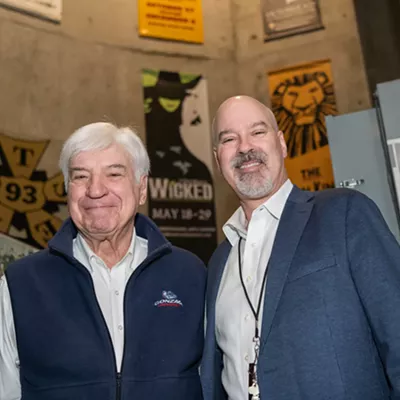New documents released by Walker Parking Consultants of Indianapolis -- the city's primary consultant on the parking garage project -- give a greater level of detail about how it arrived at the faulty revenue projections it gave to the city in late-1996. Here's an overview of that timeline, based on Walker's own internal documents obtained by the city in the discovery phase of its ongoing litigation against Walker and the River Park Square developers.
Early-1994: Walker corresponds with Callison, Nordstrom's architects, about the possibility of serving as consultant on a new River Park Square parking garage.
September, 1994: Walker corresponds with DeBartolo, a shopping mall consultant then working for Spokane's Cowles family on its downtown mall project, proposing to become the consultant on the project.
November, 1994: Walker sends its first parking supply and demand study for the proposed garage to DeBartolo. The garage's historical revenues are revealed in this document. Between 1987-94, the garage took in, on average, $835,598 per year. Parkers paid between $1.24-$1.43 for their entire stay in the garage during those years.
Spring, 1995: Bill Maher of Ernst and Young is hired to create operating projections for an expanded garage. Walker's work is relied upon by Maher in preparing these projections. Maher's analysis shows that the garage would only be able to pay off $3.2 million in debt service. Maher also includes a set of numbers starting from a higher point -- a point set by Walker to reflect an expanded garage instead of historical parking patterns. This second set of numbers nearly doubles the garage's projected performance by the year 2010.
June, 1995: Walker amends its projections to include money that may come the garage's way through a parking validation program. This increases the garage's debt service ceiling to $12.8 million. Also at this time, Walker offers a proposal to the city of Spokane to prepare a feasibility study that would guide their decision about joining the project.
February, 1996: Walker receives a fax from Maher estimating construction costs for the garage. The number -- $22.2 million, costing $1.9 million a year -- was higher than any projection so far could support. Maher tells Walker he is forwarding the numbers at the request of Bob Robideaux, the mall's manager since 1987. Within a few weeks of that transmission, Walker sends along an income projection that supports the $1.9 million annual payment by raising the parking rate to $1.40 per hour -- even though parkers in the garage were used to paying about that much for their entire stay.
March, 1996: Walker is hired by the city, but there is no documentation suggesting that Walker disclosed that it had already developed an analysis that met the developers' objectives.
June, 1996: Walker submits its feasibility study to the city. Assumptions include an hourly rate of $1.50 (except Sundays), an average stay of three hours (2.5 for theatergoers), but no income from validation. These new projections were the most ambitious yet, multiplying historical numbers by five. This is the only projection offered at the City Council's special meeting in October, 1996, when the city's participation was debated.
January, 1997: The City Council votes to join the project and adopt the projections for purposes of setting the ultimate purchase price of the garage. The garage's projected revenue is crucial in determining that the garage will be bought by city-backed bonds for $26 million.
August, 1997: Walker sends two scenarios to Robideaux at his private request. These numbers were not as lofty as those that were sold to the City Council. Rather than expecting to make between $2.50-$4.50 per parker, these projections look at making between $1.50-$2 per parker. One of these analyses shows annual revenues will be lower than the city-adopted analysis by more than $1 million per year.
September, 1997: Robideaux receives a third set of numbers, again at his private request. This time, Walker looks at the impact of a validation program, which gives parkers discounts to use the garage. There is no documentation from Walker to suggest that the city was ever privy to these three scenarios.
September, 1998: The bonds to finance the project are sold, and despite the three intervening scenarios Walker studied, the numbers sent out with the bond issue are the same ones the City Council adopted in early-1997. Walker is hired by the developers to update the numbers as required for a bond issue, and it again arrives at the same $1.50 per hour/three hour stay conclusion. Significantly, now more entities than the city are relying on Walker's numbers -- those who bought the bonds expecting a return on their investment are now also legally relying upon the consultant to provide accurate projections. However, these numbers are twice what Walker had arrived at just a year before when it ran the third private scenario for Robideaux.
November, 1998: Walker finalizes the validation-impacted numbers it had been working on for Robideaux in late-1997, this time based on the exact number of parking spaces and seats in the movie theater, and provides a report to Robideaux.
June, 1999: Controversy erupts only two months before the mall is to reopen when AMC Theaters learns it is expected to help pay the parking of its patrons, even though its lease states it will pay no parking fees. After threatening to pull out of the project, the parking rate structure is adjusted to a flat rate after 5 pm daily and all day Sunday to accommodate AMC. This, however, means the garage will never get that $1.50 per hour they advertised. Walker runs a scenario for Robideaux based on this new development, which Robideaux shares with the interested parties. Immediately, representatives of the Parking Development Authority realize this will mean the garage won't be able to pay its bills.
September, 1999: Despite evidence that the new flat rate structure won't pencil out, the parking rate structure Walker sold to the city in 1997 was dropped.
February, 2000: Shortfalls caused by the new rate structure come home to roost, as the garage's financial problems become clear through public meetings and reports in the media.
July, 2000: Among others, Walker is sued by the city of Spokane for breach of contract and professional malpractice.
April, 2001: Walker complies with the city's discovery subpoenas, providing the paper trail described above.




















